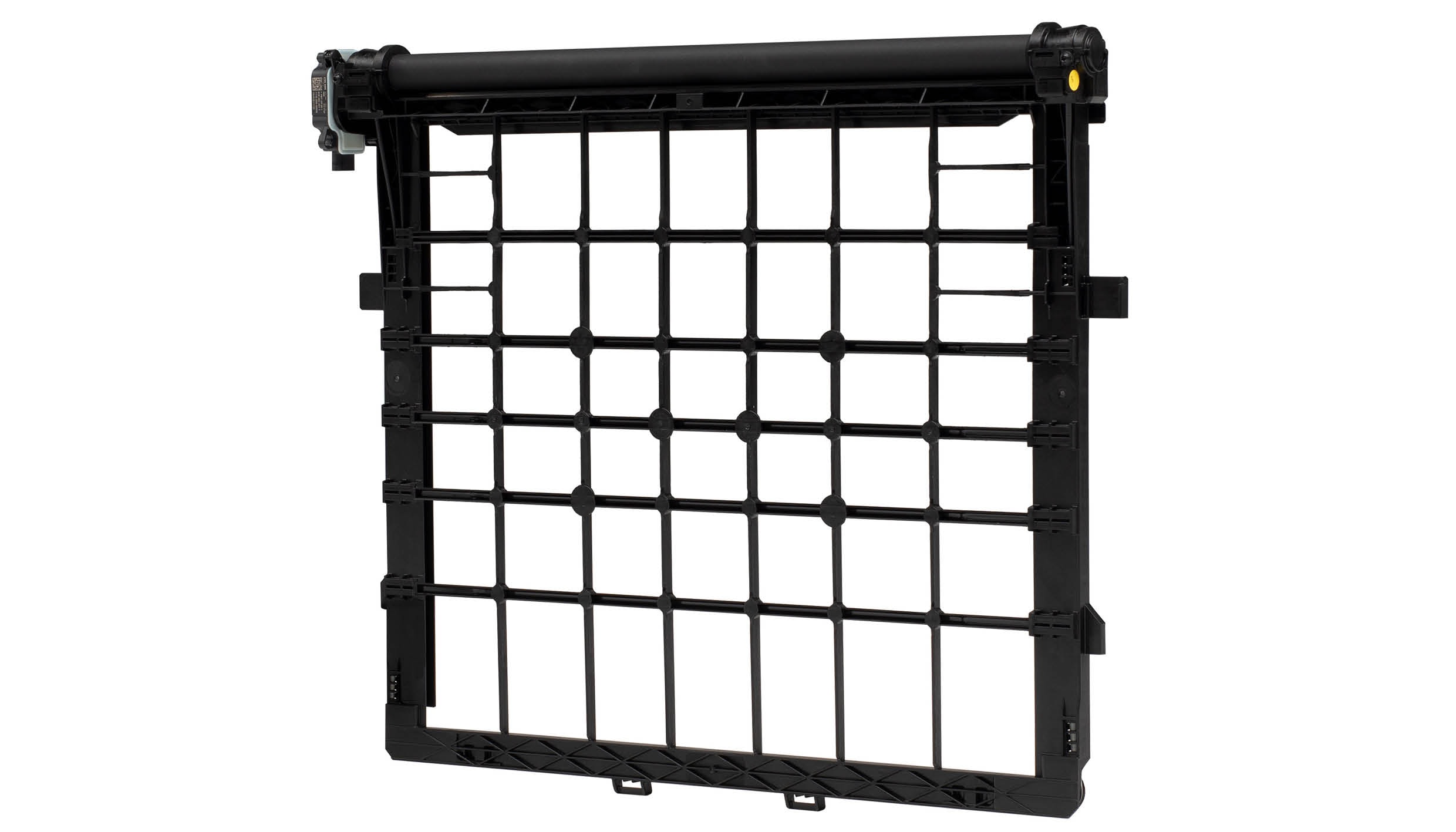Active Rollo
Efficiency in the tightest of spaces
The HBPO Active Rollo is a further development of the Active Grille Shutter, using a thin textile instead of moving plastic parts. Designed to improve vehicle aerodynamics and help reduce drag and tractive resistance, the Active Rollo contributes to reduced vehicle consumption and indirectly to reducing CO₂ emissions, as well as allowing longer range in electric vehicles.We have refined our classic air control systems – the Active Grille Shutters – and have even gone a step further with the Rollo. By using a thin textile instead of the synthetic shutter, it is much more space-saving than the conventional solution and can achieve the same increase in efficiency. Our Rollo helps to reduce drag and tractive resistance, and thus to save on consumption and indirectly on CO₂.
with a similar increase in efficiency to AGS
The Rollo is installed in tight design spaces
Just like cars with combustion engines, electric vehicles have aerodynamic properties which affect consumption and range. However, the special design space situations in the front-end module of these fully electric driven vehicles result in special challenges which did not permit installation of a classic Active Grille Shutter. Nevertheless the development of an air control system for electric vehicles was still on the wish list. Our HBPO Research & Development Team started looking for a solution. First ideas and feasibility studies have shown it is possible – the result is the HBPO “Rollo”. This system greatly reduces the space requirements in vehicle longitudinal direction and basically works in a similar way to a blind.
Thanks to the vertical and/or horizontal direction of movement, the Rollo can be installed wherever there is little space available for a conventional Active Grille Shutter solution. Thus, the use in the underbody vehicle is also conceivable.

Our Rollo is miraculous
The effect of the Rollo system correlates to that of the conventional Active Grille Shutter, although it works in a completely different way. The flow to cooling components can be controlled by rolling a technical fabric up and down; this moves along and is wound up by two guide rails. Great demands made on such technical units, particularly in electric vehicles:
- Fluctuations in temperature, which can vary between the extremes 40 and +80°C
- Regular strain caused by opening and closing the system
- Dynamic pressure applied in the closed state.